Combat aircraft. "Falcon", which is not a falcon, and "Baran", which became "Falcon"
"Falcon", which is not "Falcon"
In general, this aircraft could become a very outstanding machine. Still, in the concern of the great (I’m not afraid of this word) Count Giovanni Caproni, they knew how to build cars, and the modest Officine Meccaniche Italiane-Reggiane or simply Reggiani, which was part of the Caproni concern, could also design and build aircraft.
The first Falcon was the creation of engineers Roberto Longhi and Antonio Alessio. The designers were not lucky in terms of the name, the Re.2000 was never officially called by the name that the creators called it, because the official Sokol, that is, the FIAT CR.42, appeared a little earlier.
One of the designers, Roberto Longhi, worked for a long time in the United States, from where he brought innovative ideas such as all-metal aircraft structures. In Italy at that time, planes were mostly wooden.
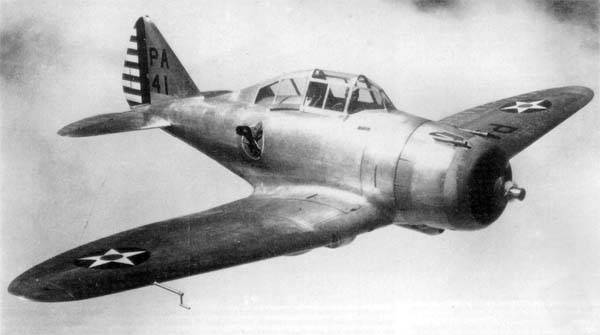
So in the guise of the "Falcon" one can easily guess the American promising aircraft Seversky P-35.
In 1938 the Italian Ministry aviation played a big competition for the project of a single-engine monoplane fighter with an air-cooled engine and armament from two synchronous heavy machine guns. The aircraft was selected for the role of the main one in the Italian fighter aviation.
The Re.2000 made its first flight on 24 May 1939. The tests went extremely smoothly and without incident, so the Italian Air Ministry ordered two more aircraft for further testing.
In August 1939, the FIAT G.50, Macchi MC200, Aeronautica Umbra T.18, Capronni-Vizzola F.5 and Re.2000 met in the final. The benchmarks for comparison were Messerschmitt Bf.109E and FIAT CR.42.
Re.2000 showed excellent results. The speed at an altitude of 5000 meters was 515 km / h, the ceiling - 8000 m, flight range - 1040 km. The speed could be higher if the designers had a more powerful engine at their disposal, at least at the level of 1200-1300 hp.
In training battles, the Re.2000 showed even better maneuverability than the FIAT CR.42, which was unexpected, since monoplanes of that time usually lost out to biplanes in terms of maneuver.
But Re.2000 lost the competition. Moreover, he lost because of such a thing as fuel tanks. Firstly, they were unprotected, and secondly, they were located in the wing and were made in such a way that when the wing was loaded, the rivets of the power structure of the wing were loosened, which at the same time served as the basis for the tanks. Accordingly, this led to a weakening of the design of the tanks and fuel leaks, which naturally did not please the Ministry of Aviation.
As a result, the competition was won by the FIAT G.50 and Macchi MC-200 "Saetta". But the Ministry ordered the Reggiana a series of 200 cars. True, the order was later canceled and the Ministry did not want to return to the Re.2000 theme, even despite the fact that the Regiana designers redesigned the wing, making it three (and not five, as at first) spar and equipping it with conventional supplementary tanks.
In "Reggiana" did not lose heart and began to offer a plane to the border. Yugoslavia wanted to purchase 50 aircraft and a license, Switzerland and Spain also expressed a desire to buy 50 aircraft each, Finland wanted 100 aircraft. But things did not go beyond intentions.
There was just an amazing contract ... with the UK! Through their mission, the British ordered 1940 aircraft in 300 after testing. Surprisingly, because World War II was already underway. The most interesting thing is that the German allies were initially not against such a deal in March 1940 and blocked it only a month later.
And Italy's entry into the war in June ended the quiet negotiations between Caproni himself and Lord Hardwicke. The two gentlemen still wanted to make a deal bypassing Germany, through the Portuguese firm of Soc. Aeroportuguesa, which was owned by Caproni and send planes to the UK.
Business, as they say, and nothing personal.
Hungary bought 50 aircraft. They served there for quite a long time, the last copies, which served as training ones, were decommissioned around 1960.
60 aircraft acquired neutral Sweden.
The Swedes were supplied with Re.2000s with slightly more powerful Piaggio P-XI bis RC-40 engines and were the fastest aircraft in the Swedish Air Force. The Re.2000 was popular with pilots because of its flight characteristics, but the technical staff hated the Italians because of the whimsical engines and synchronizers and machine guns that failed in the cold.
Being the fastest fighter aircraft in the Swedish Air Force, the Re.2000, which was designated J-20, was used to intercept foreign aircraft that violated the borders of neutral Sweden and escort them for landing and internment.
In general, "through the fault" of the Re.2000 with three crowns on the wings, many Allied bomber crews shot down over Germany landed in Sweden, accompanied by the Falcons, and did not fall somewhere in the sea.
During the entire war, out of the entire number of Re.2000s in the Swedish Air Force, 16 aircraft were lost and 18 received various damage, both as a result of hostilities and due to accidents.
One survived, which took its rightful place in the Swedish Museum of the military stories Air Force
In Italy, they returned to the Re.2000 only in 1941, when the issue of replacing the Fiats CR.32 and CR.42 became acute. Not only were these aircraft significantly inferior to the Allied fighters in Africa, but they had to be transported by sea and assembled on the spot. With the Re.2000, it was possible to increase the volume of fuel tanks to 1491 liters and provide a non-stop flight to Africa. This aircraft was named Re.2000GA (Grande Autonomia).
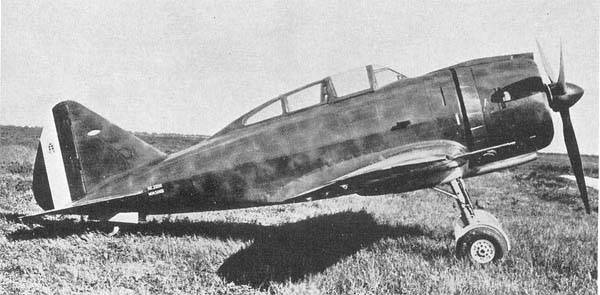
The fighters decided to test in a combat situation. For this, a squadron was formed
"Sezione Sperimentale Reggiane" as part of the 74th squadron of the 23rd group of the 3rd fighter storm in Sicily. The Re.2000s of this unit flew 322 sorties, escorting convoys, reconnaissance and interception.
The actions were not exactly unsuccessful, but there were frankly few successes: one Blenheim was shot down, several successful attack on Malta and the detection of a convoy coming from Tunisia, which were aimed at by bombers.
The lack of great success was primarily due to the great distance from the main theater of operations.
By that time the fleet had awakened. And I wanted to try the Re.2000 as a replacement for the definitively obsolete ejection fighters Ro.43 and Ro.44. 10 Re.2000С (Catapultabile) modifications were manufactured, equipped with mounts for launching from a catapult and a reinforced power pack. The set of radio equipment was also different, which was due to the use of navy other frequencies.
Naval aircraft for AARM (Aviazione Ausiliaria per la Regia Marina - Auxiliary Aviation of the Royal Navy) were tested at coastal airfields and aboard the battleships Vittorio Veneto and Roma.
The combat-ready machines of the 377th squadron were overtaken by its pilots to the Reggiane factory for conversion into a naval version. Also, for the needs of the fleet, ten vehicles built to make up for the losses of the squadron were transferred.
On May 9, 1942, the first ejection launch from a ship was made.
Since the aircraft was wheeled, it was assumed that after starting from a catapult and performing tasks of patrolling or intercepting the enemy, due to its long flight range, it would be able to reach a land airfield and land on it.
Marine catapult versions of the Re.2000 did not show themselves in any way in the war. Of the ten manufactured version C aircraft, one that served on the Vittorio Veneto has been preserved as a museum copy.
The small arms of the Re.2000С naval variants consisted of two synchronized 12,7 mm Breda-SAFAT machine guns with 300 rounds of ammunition per barrel. Strengthening the fuselage for launching from a catapult made it possible to equip aircraft with a bomb rack for a bomb weighing up to 200 kg.
LTH Re.2000
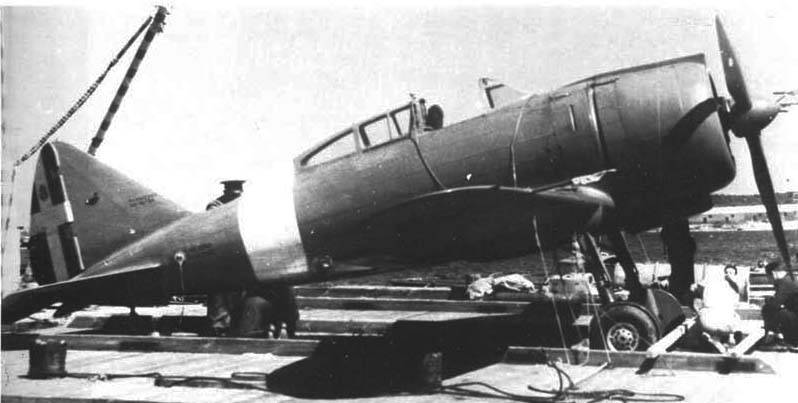
Wingspan, m: 11,00
Length, m: 7,99
Height, m: 3,20
Wing area, м2: 20,40
Weight, kg
- empty aircraft: 2 070
- normal takeoff: 2 880
Engine type: 1 x Piaggio P.XI RC.40 x 985 hp
Maximum speed km / h
- near the ground: 420
- at height: 530
Cruising speed, km / h: 451
Practical range, km: 1 300
Maximum rate of climb, m / min: 750
Practical ceiling, m: 11 500
Crew, prs: 1
Armament:
- two synchronized 12,7 mm Breda-SAFAT machine guns with 300 rounds per barrel
- 2 x 20 kg incendiary or fragmentation bombs, in the naval version - 1 bomb 200 kg.
"Taran", which became the "Falcon"
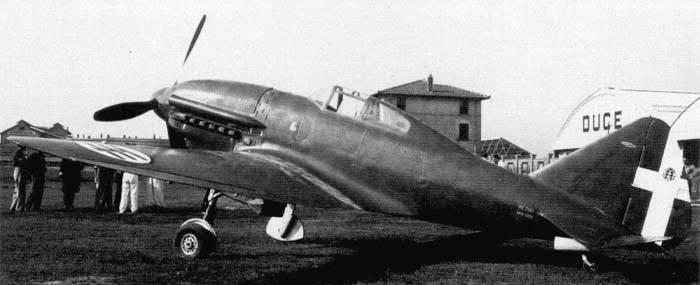
A further continuation of the "falcon" theme was the work to modernize the Re.2000 aircraft and improve its flight characteristics by installing a more powerful in-line water-cooled engine RA.1000RC-41 / I. Behind this long marking was a well-known 12-cylinder engine from Daimler-Benz DB.601 A-1 with a power of 1 hp, which was launched under license.
An increase in engine power of almost 200 hp promised significant improvements in performance characteristics, and therefore, Roberto Longhi, who had become the chief designer of the Reggiana company by that time, and his subordinates practically redesigned the fuselage to accommodate an in-line engine with a completely different weight distribution. The prototype was named Re.2001 and was assembled and flown in June 1941.
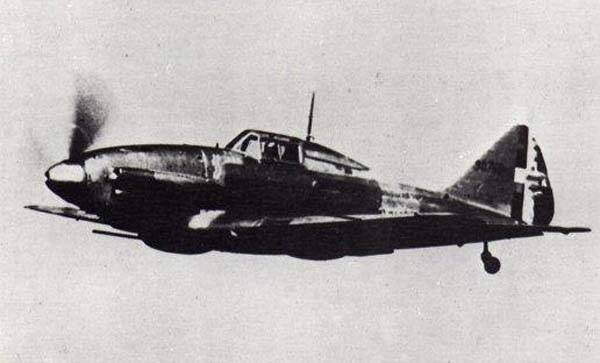
The car, as expected, showed excellent maneuverability and quite a decent speed of 563 km / h at an altitude of 5500 meters.
The tanks were protected, the aircraft was equipped with an electric starter, the armament was reinforced by installing two 7,7-mm machine guns in the wing consoles.
With the name, too, it turned out peculiarly. Initially, the car was named "Ariete". This word can be translated as "Taran", but it also has the meaning of "Aries" or "Ram". So it is not surprising that in the end the plane became the second Falcon.
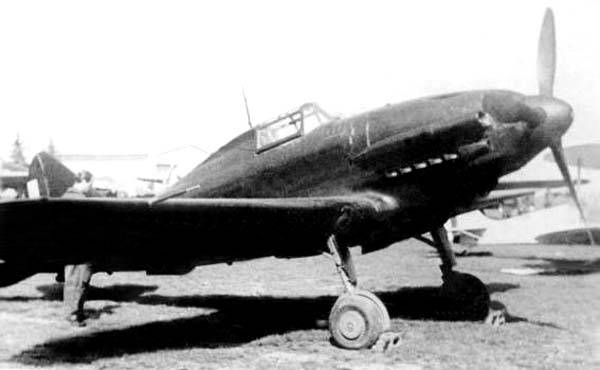
October 1940 was marked by an order for 200 Re.2001s. Further, the assembly of 200 aircraft was ordered by Breda, an order for 100 aircraft was received by the Caproni branch in Toledo, 100 aircraft directly by Caproni at the plant in Predappio.
The first production car was ready in September 1941. The Swedes, who were already buying Re.2000s, also ordered 100 aircraft, but then huge engine problems began. The Germans disrupted the delivery of their DB-601s, and the licensed RA-1000RC-41 / I could not go into serial production. Orders issued by Breda and the Spanish branch of Caproni had to be canceled, and the order for Reggiana was reduced to 100 cars. The 100 vehicles ordered by Caproni Predappio were reduced to 10.
Confusion began, as a result of which the Ministry of Aviation did not behave in the best way, starting to rush about in search of options with the Re.2001. As a result, 39 aircraft began to be converted to the Re.2001CB (Caccia-Bombardiere - fighter-bomber) variant, strengthening the fuselage and placing bomb racks under it for two bombs weighing 100, 160 or 250 kg each.
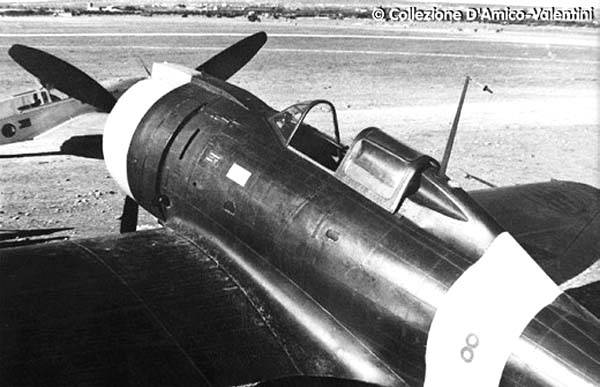
In addition, 100 Re.2001ORs were ordered in two separate batches, complete with braked landing hooks and catapult launch attachment points. These aircraft were intended to equip the Aquila and Sparviero aircraft carriers under construction. The construction of the aircraft began, but it did not work out with the carriers themselves. "Sparviero" was not even laid down, and "Aquila" was abandoned to build with a degree of completion of 80%. So all aircraft of the OR series were converted to land-based.
One of the OR-standard aircraft was converted into a torpedo bomber. This variant was designated Re.2001G and prepared for trials in June 1943. In parallel with it, work was underway on the project of a bomber fighter capable of carrying a 630 kg bomb.
This model was called GV. Two aircraft were built, which made a single sortie and dropped bombs on the British aircraft carrier Victories. One bomb fell on the deck of an aircraft carrier but ricocheted overboard, where it sank without exploding. After this experiment, the Re.2001GV was abandoned.
Next was the Re.2001CN night fighter variant (Caccia Notturrna - night fighter), whose armament was to consist of two 20-mm cannons placed in "baths" in the wing root, in place of 7,7-mm machine guns. In addition to cannon armament, the aircraft were equipped with flame arresters on the exhaust pipes. 34 vehicles were built, but with weapons it turned out "everything is bad."
The Italians were never able to acquire their aircraft guns, and the Germans, who promised to supply the Mauser MG.151 / 20, disrupted the deliveries, because "there was barely enough for themselves."
By the day of Italy's surrender, 237 Re.2001 aircraft of all variants were manufactured.
As part of the Italian Air Force, the Falcons were mainly engaged in escorting Italian bombers to Malta. The range of action is quite allowed. Here, the Re.2001 faced worthy opponents in the face of the Hurricane versions II and III and the Mk.V Spitfaras.
It is worth noting that British aircraft, inferior or equal in performance characteristics, invariably had an advantage in the strength of a volley of airborne weapons.
The second, smaller part of the Falcons fell into the fighter groups, which were engaged in the interception of British heavy bombers. It was even more thankless work, because the fire of two 12,7-mm and two 7,7-mm machine guns for the Stirlings and Lancasters was not fatal.
It is not surprising that by the time of the capitulation of Italy, only 73 Re.2001 aircraft remained in the Air Force.
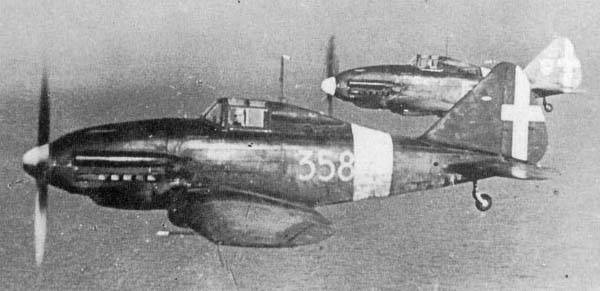
For British fighters, the Falcon was a tough nut to crack. Escort flights to Malta showed that the Re.2001 under the control of an experienced pilot is capable of much. On May 12, 1942, in a battle over Malta, Sergeant Giovanni Marchio reliably shot down two Spitfires. True, the British did not skimp either, and although Marchio made it to Italy, or rather, to Sicily and even landed his riddled plane, the wounds received in battle left him no chance to survive.
Of course, the reports of the Italians are a separate issue. But British reports indicate that the Falcons calmly dealt with the Hurricanes and fought on an equal footing with the Spitfires and Beaufighters, knocking down both of them.
When the Allies began their invasion of Sicily, the Falcons were at the forefront of attacking British and American aircraft. Naturally, Re.2001 suffered losses, and out of 71 aircraft that entered the battles in the skies of Sicily, by the time of the armistice on September 8, 1943, 33 aircraft remained.
The remnants of the Italian Air Force were reduced to 21 groups of allied air forces in Italy and the Italians began to fight against the former allies of the Germans in the skies over the Balkans.
Here was an interesting use case for Re.2001. The plane played the role of "money bearer". In a special container, Sokol delivered 12 million lire salaries to Italian troops who were surrounded near the city of Pievle in Slovenia. Why the encircled troops need money is a separate question, but several such flights were made.
The result of the Re.2001 career was as follows: after the war, the aircraft was quickly decommissioned and sent to landfills, despite the fact that the Sokol turned out to be a really durable and combat vehicle in combat operations.
Nevertheless, in Italy itself, Re.2001 remained literally in a few copies. Three aircraft were operated by a special communications unit, four more lived out their lives as meteorological service aircraft.
The Falcon, one of the latest military creations of the Caproni concern, turned out to be quite a good aircraft, the weak point of which was only the armament. If the Italians had more powerful engines and air guns at their disposal, the Re.2001 could have become on par with the best aircraft of that war.
LTH Re.2001
Wingspan, m: 11,00
Length, m: 7,99
Height, m: 3,20
Wing area, м2: 20,40
Weight, kg
- empty aircraft: 2 070
- normal takeoff: 2 900
Engine: 1 x Alfa Romeo RA.1000 x 1 hp
Maximum speed km / h: 540
Practical range, km: 1040
Practical ceiling, m: 12 000
Crew, prs: 1
Armament:
- two synchronous 12,7-mm machine guns (350 rounds per barrel);
- two 7,7-mm machine guns in the wings (600 rounds per barrel);
- up to 640 kg of bombs.
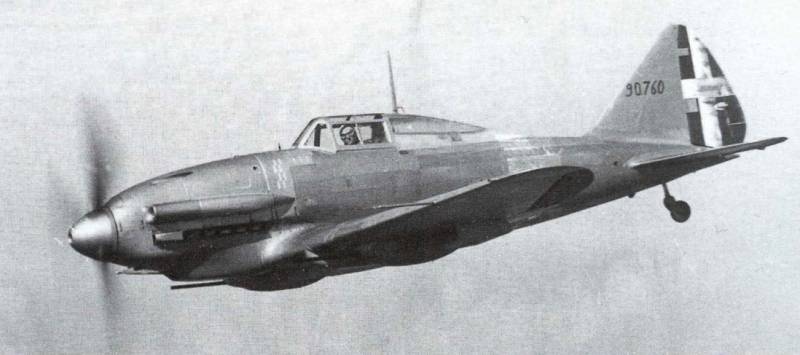
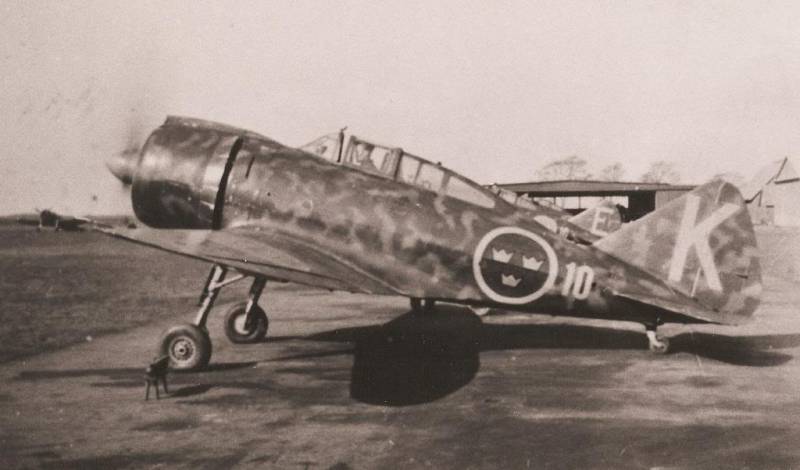
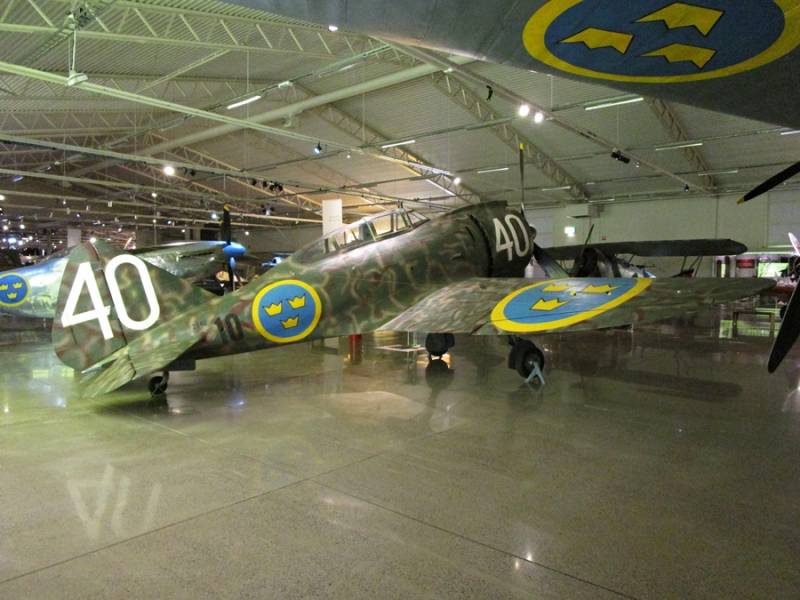
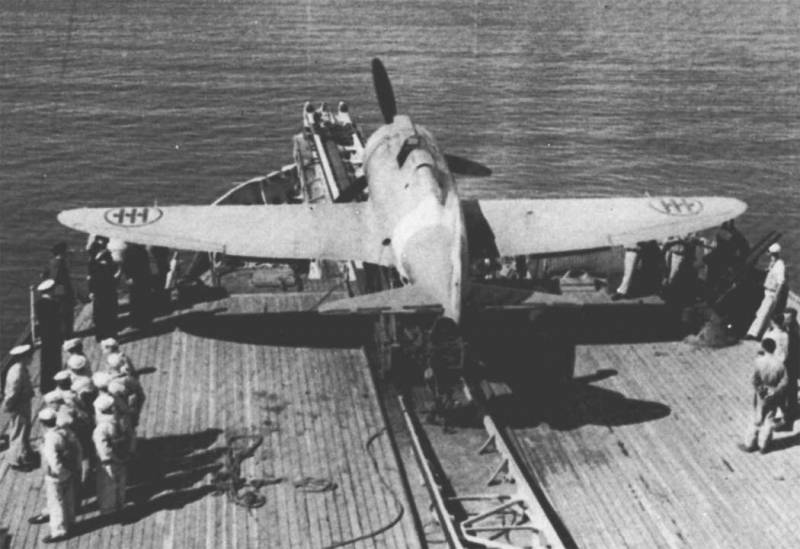
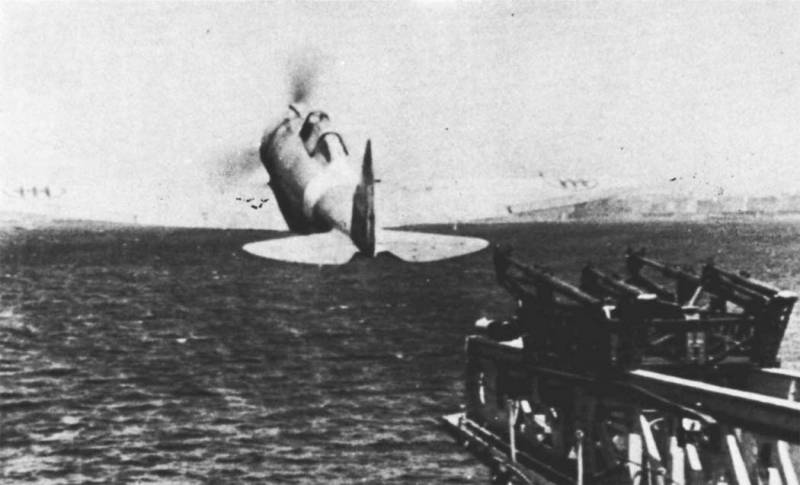
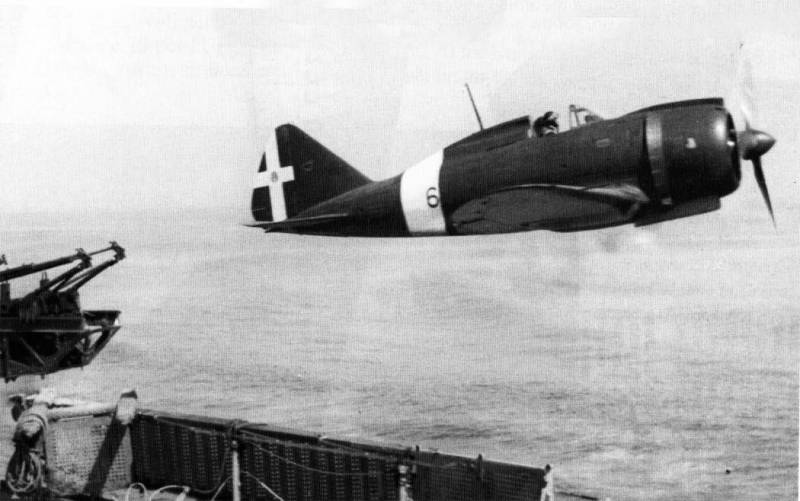
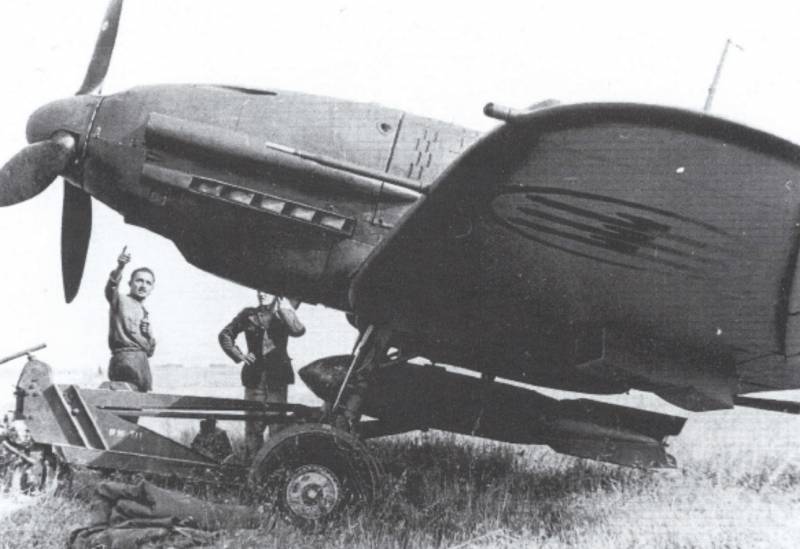
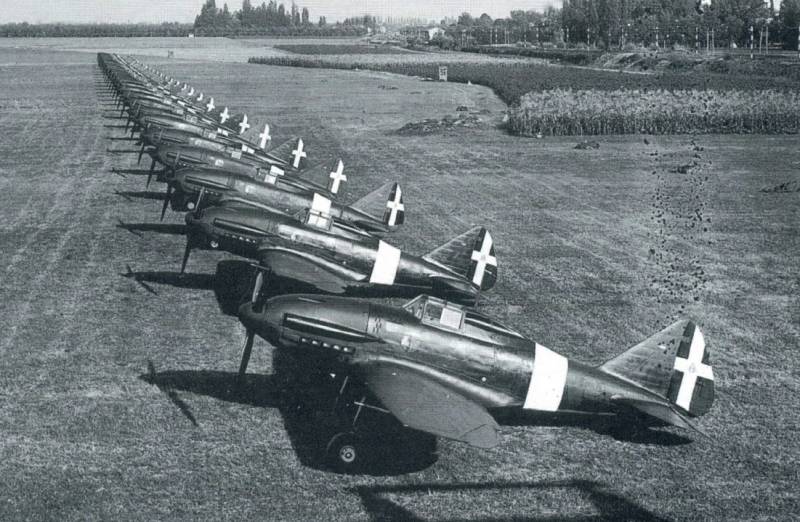
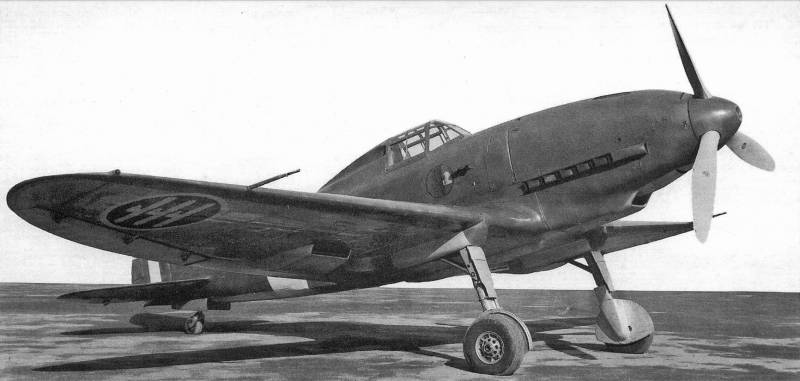
Information